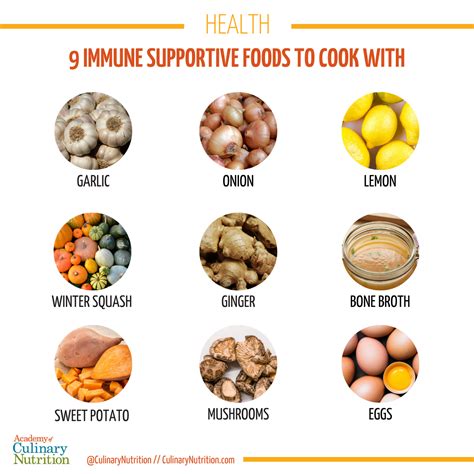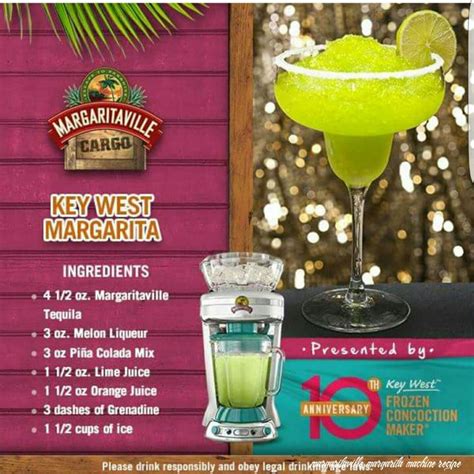Recipes to reduce cramps, bloating and more
When you’re in the throes of period pain, your gut-instinct may be to curl up into the fetal position and call in the greasiest takeout you can find. There’s no shame in getting delivery, but the problem is that your go-to order may actually be dialing up the intensity of your period cramps. The Impact […] The post What to eat for a painful period: Recipes to reduce cramps, bloating and more appeared first on HUM Nutrition Blog.

When you’re in the throes of period pain, your gut-instinct may be to curl up into the fetal position and call in the greasiest takeout you can find. There’s no shame in getting delivery, but the problem is that your go-to order may actually be dialing up the intensity of your period cramps.
The Impact of Food and Inflammation
“What you eat absolutely can affect the pain factor of your monthly bleed,” according to functional nutrition and women’s hormone expert Alisa Vitti, best selling author of WomanCode and In the FLO, creator of the Cycle SyncingⓇ Method. Eating certain foods during your period can increase systemic inflammation as well as mess with levels of cramp-modulating substance called prostaglandins, she says.
If an individual has high levels of inflammation and an imbalance in prostaglandins, they are more likely to experience period pains and period cramps, explains Vitti. But on the flipside certain foods have anti-inflammatory properties so eating them will encourage reduced pain overall, she says.
With that, read on for a list of the best and worst foods for period pain and other symptoms. The knowledge ahead will allow you to make food choices that support your cycle rather than make your discomfort worse.
Foods To Eat For Reduced Period Pain (a.k.a Serious Menstrual Pain)
1. Nuts and seeds
Your period is the perfect time of month to boost your daily intake of healthy fat. Consuming foods with omega-three fatty acids will help increase the presence of linoleic acid in your body. This, in turn, increases the production of two types of prostaglandins (called PgE1 and PgE3), explains Vitti, which help balance out levels of the ‘cramp-causing’ prostaglandins (called PgE2).
Don’t have luck with picking the perfect avocado? Fear not, there are choices that don’t require you to
have a green thumb. “Flax, pumpkin seeds, sunflower seeds and sesame seeds are all great picks,” says Vitti. All of these seeds and nuts make a wonderful snack on their own. Another option is to create a period-friendly trail mix with all of the aforementioned seeds and nuts, plus a chocolatey kick. You can also incorporate HUM’s Omega the Great into your daily supplement routine for that extra dose of omega-3 fatty acids. It’s made of ultra-pure high-quality omega-3 fish oil, with an ideal ratio of omega-3s EPA + DHA.
2. Tinned Fish
Tinned fish is an often overlooked source of omega-3 fatty acids. Salmon and sardines are especially rich in the cramp-ceasing ingredient, says Vitti.
Tinned fishes can be enjoyed right out of the can. But you can also zhuzh them up with mayonnaise or greek yogurt, or by spreading them out with a cracker.
3. Fruit
Ramping up consumption of foods with anti-inflammatory properties is the name of the game, as far as eating for period pain is concerned. With that, no food group does it quite as well as fruit.
One 2028 study published in PLoS One journal found that eating a vegetarian diet—which is naturally higher in anti-inflammatory fruits than standard American diets—corresponded with less menstrual cramps and pains. Other research has shown that eating a Mediterranean Diet, which prioritizes fresh fruits and vegetables, is also linked to decreased menstrual pain.
If this tid-bit of info is inspiration enough to give a vegetarian or Mediterranean, have at it—so long as your healthcare provider gives you the greenlight. But you can also get the pain-dulling effects of fruit without overhauling your meal-plan by simply making an effort to eat more oranges, bananas, strawberries, and the like.
4. Dark Leafy Greens
When your period rolls around, do yourself a favor and fill your produce drawer with kale, spinach, swiss chard, bok choy, and whatever other leafy green is in season..
These dark green vegetables are chock full of iron, which the body loses a little of during your monthly bleed. Consuming iron-rich foods like this helps increase iron stores and reduces the risk of anemia and iron deficiency, per the World Health Organization. Given that the loss of iron through menstrual blood can lead to heightened fatigue during this time, chowing down on these foods can help ward off (additional) bouts of low energy.
The good news: Upping your dark leafy green intake doesn’t mean you need to start gnawing on kale like a cow on grass. Blending them up into a green smoothie or juice with frozen fruit will help hide their earthy taste. You can also saute greens with a bit of olive oil, massage them with lemon to break-down the toothsome texture, or toss them into your homemade soups and stews.
5. Water
Okay, okay, okay, water may not be a food, per se, but no list of what to eat (or drink!) for reduced period pain would be complete without it.
Dehydration is a common cause of cramps—including period cramping. In fact, research suggests that the intensity of menstrual cramps is hugely impacted by levels of hydration. One 2021 study published in the journal BMC Womens Health found that women who intentionally drank 7 or more cups of water during their period reported less PMS symptoms compared to those who did not up their water intake. Drinking enough water can also help decrease the risk of period-related headaches, as well as reduce levels of water-retention which often go up during menstruation.
If you struggle to drink 6 to 8 glasses of plain water per day, consider opting for a caffeine-free iced or hot tea instead.
Foods To Avoid For Less Painful Periods
1. Canola Oil
While omega-3 fatty acids can improve period pain, omega-6 fatty acids can make it worse. The reason? “The body produces more cramp-causing PgE2 when there are too many omega-6,” says Vitti. “The main culprit of excess omega-6 fatty acids is often too much canola oil,” she says.
Canola oil hides in many of the condiments and snacks in your pantry, including your salad dressings, chips, and cookies. Many restaurants also use canola oil when cooking instead of olive oil because it is cheaper. If you’re committed to eliminating certain foods from your diet in the name of reduced period pain, give your pantry a refresh.
Additionally, if you choose to order take-out during your period, opt for foods that are not fried or sauteed to reduce the presence of canola oil. You can also ask that they can use olive oil for your meal instead.
2. Red Meat
“Red meat contains a type of omega-6 fatty acid called arachidonic acids, which bring about the overproduction of PgE2 prostaglandins,” says Vitti. With that, cutting back on red meat—or avoiding it altogether—can help reduce period symptoms like cramps, she says.
If red meat makes an appearance in your diet, a good starting point is Meat Free Monday. From there, you can gradually reduce intake by switching to protein-rich alternatives like chicken, turkey, fish, and pork. On days when you’re short on time, a rotisserie chicken from your local grocery store or pre-cooked frozen shrimp are a healthy, time-efficient pick.
To keep your iron levels healthy while cutting back on burgers, try to ramp up dark leafy green consumption or talk to your provider about iron supplementation.
3. Dairy
On your period, your instinct may be to lug a pint of ice-cream into bed and chow down while watching Gilmore Girl reruns—but that dairy overload might not be doing you any favors. Much like red meat, dairy contains a high proportion of arachidonic acids which can increase levels of cramp-causing chemicals, says Vitti. Consuming too much dairy can also lead to bloating and diarrhea, which will compound any gastrointestinal symptoms you’re already experiencing while you’re menstruating.
There are a number of dairy-free ice cream alternatives on the partner, including coconut milk ice and sorbet. If what you’re really craving is something cold, you could also consider eating frozen banana. To give the potassium-rich snack a sweet boost, you can dip the ‘nanner in chocolate or organic peanut butter.
4. Alcohol
Hate to break it to you, but your period and alcohol go about as well together as a Taylor Swift in Matt Healy. Alcohol consumption has been shown to have an inflammatory effect on the body, which will exacerbate any aches or pains you’re feeling throughout your cycle. Alcohol is also dehydrating, which can worsen any headaches, fatigue, or bloating common during this time of the month.
Water is the absolute best thing you can drink during your period, making it the most ideal substitution for booze. If water isn’t quenching your thirst even after you squeeze some lemon into it, you could try a ginger shot, low-sugar hot chocolate, green drink, bone broth, or fruit smoothie.
The Best Supplement for PMS
Now that we have walked through helpful tips to ease those possible period woes, there is a daily habit we can’t miss and that is taking HUM’s SOS PMS gummies. This is the first delicious gummy combining clinically tested chasteberry extract, 50mg standardized to 1.5% agnusides, and vitamin B6 for PMS symptom relief and to maintain healthy hormonal balance + cranberry to support urinary tract health. It’s a must for us, will you be giving it a try?
When To Talk To A Healthcare Provider
If your period symptoms negatively impact your quality of life, or you would describe your menstrual cramps as ‘excruciating’,’ agonizing’, or ‘unbearable’, it’s time to contact a healthcare provider. Period pain may be common, but it is not normal, according to researchers from Oregon Health & Science University. In some cases, severe period pains are caused by underlying gynecological conditions such as endometriosis, fibroids, infection, ovarian cyst, narrow cervix, or a retroverted (tipped) uterus, says Vitti. While some of these conditions can be managed with the help of a specific diet, most cannot be treated with diet interventions alone.
The post What to eat for a painful period: Recipes to reduce cramps, bloating and more appeared first on HUM Nutrition Blog.

 mainadmin
mainadmin 










